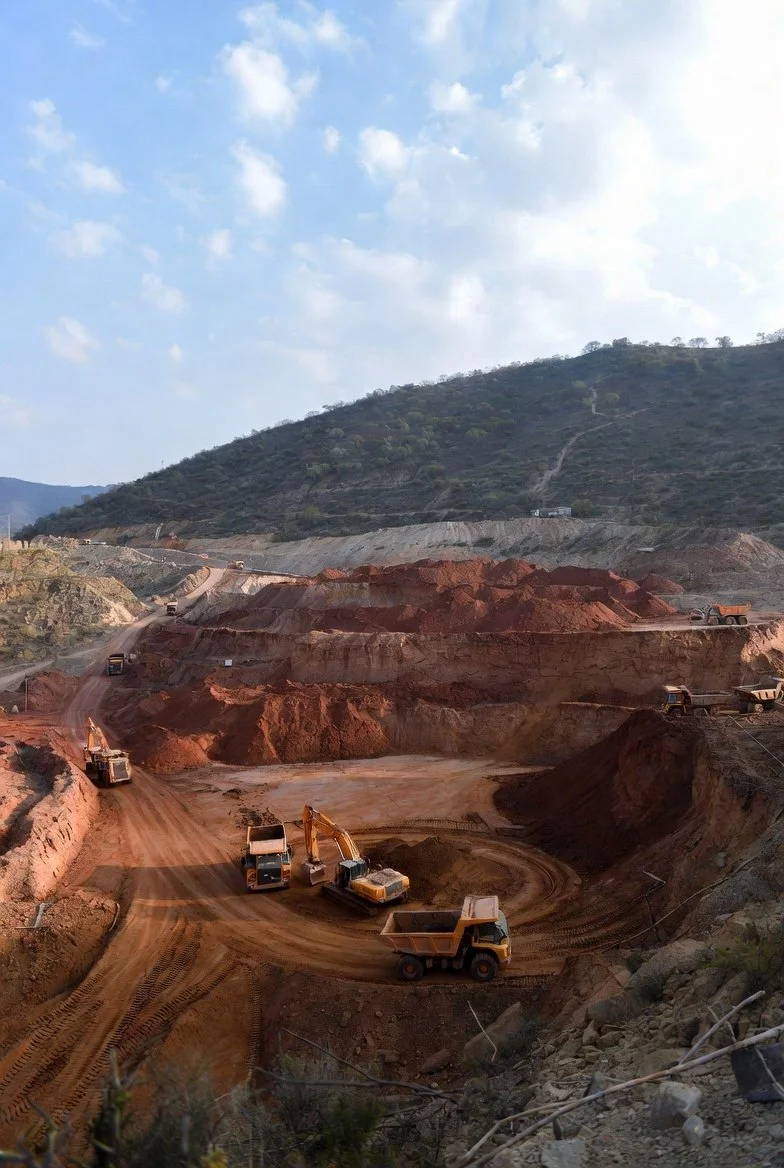Rare Earths Revolution
Trends and Opportunities in Critical Minerals
Navigating the Future of Strategic Resources
In the modern era, the pulse of technological progress and the heartbeat of geopolitical strategy are increasingly measured by access to critical minerals—chief among them, rare earth elements (REEs). These seventeen elements, though scattered subtly in the Earth’s crust, form the invisible foundation beneath much of the world’s advanced technology: from the silent spin of wind turbines along coastal plains and the quiet glide of electric vehicles through city streets, to the resolute hum of defense systems safeguarding nations. The rare earths sector, once obscure and niche, now sits at the epicenter of industrial ambition and national security, shaping the future with every decision made in extraction, processing, and policy.
With the world’s supply chains vulnerable to both market shocks and diplomatic rifts, the growing demand for rare earths is more than an economic phenomenon—it is a clarion call for innovation, collaboration, and environmental responsibility. Understanding the trends and seizing the opportunities in this evolving landscape is no longer optional for industries, governments, and investors; it is an imperative that will define the next decades of global development.
Understanding Rare Earth Elements
Rare earth elements encompass fifteen lanthanides, plus scandium and yttrium, forming a family of elements unified by their chemical kinship. Despite their misleading name, most are relatively abundant, but they seldom occur in concentrations sufficient for easy commercial exploitation. Their importance is rooted in their near-magical properties: extraordinarily strong magnetism, luminescence, and high thermal stability. These characteristics enable technologies that have transformed modern life and underpin the shift toward a low-carbon, digital future.
Permanent Magnets: Neodymium, dysprosium, and praseodymium form the backbone of permanent magnets critical to wind turbines, electric vehicles, and robotics.
Phosphors: Europium, terbium, and yttrium bring color and vibrance to LED lighting, television screens, and displays.
Catalysts: Cerium and lanthanum accelerate chemical reactions essential for petroleum refining and for controlling automotive emissions.
Batteries: Lanthanum and neodymium are indispensable in batteries powering hybrid and electric vehicles.
Glass and Ceramics: Cerium and yttrium polish and harden glass and ceramics, vital in consumer electronics and industry.
Types of Rare Earth Deposits:
The economic value of a rare earth deposit is determined by its composition (heavy versus light REEs), grade, processing challenges, environmental footprint, and the ever-shifting tides of market demand. Two deposit types currently dominate global discourse:
Ion-Adsorption Clay Deposits
These regolith-hosted deposits, also known as ion-clay or IAC, are widely considered the most economical source for heavy rare earth elements (HREEs)—such as dysprosium and terbium—which are scarce, highly sought after, and command premium prices. Accounting for roughly 80% of the global HREE supply, these deposits are usually found in southern China and parts of Southeast Asia.
Low Extraction Costs: Simple in-situ or heap leaching with mild electrolytes (ammonium sulfate or sodium chloride) can recover 60-90% of REEs, minimizing the need for extensive mining, crushing, or grinding. Chinese projects often reach profitability at even 30-40% recovery rates, thanks to minimal capital expenditure.
High-Value Output: The prevalence of HREEs, which are more valuable than light REEs (LREEs), boosts the economic efficiency of these deposits.
Shallow Depth: Their near-surface location reduces mining complexity and cost.
However, drawbacks include generally low grades, environmental risks from leaching agents (especially ammonium overuse), and overall lower tonnage compared to other deposit types.
Carbonatite Deposits
Carbonatite deposits stand out for their high grades (often 5-15% total rare earth oxides, TREO) and massive resource potential. They are globally significant for LREEs and dominate most active mining projects, supplying the majority of LREEs to the world market. Processing these ores, however, is capital and labor intensive, involving beneficiation, acid leaching, and the management of radioactive waste—a challenge both operationally and environmentally.
Other deposit types, such as alkaline igneous rocks and heavy mineral sands, usually play a supporting role, contributing rare earths as byproducts of other mineral extraction.
Geographic Distribution and Processing Capacity
China is the undisputed titan of rare earths, controlling more than 60% of production and the overwhelming majority of processing plants—estimated at 200 to 300. The United States and Australia, while scaling up, each operate only a handful of processing facilities. Pilot plants in Brazil and Canada signal an effort toward diversification, though they remain minor players for now.
China: 200-300 processing plants
United States: 3-4
Australia: 2-3
Japan: 3-4
Russia: 2
Malaysia, France, Estonia, India, Vietnam: 1-2 each
Global Supply Chain Dynamics and Vulnerabilities
With China’s dominance, global supply chains are acutely sensitive to trade disputes, export controls, and shifting alliances. Australia, the United States, Russia, and Myanmar are notable producers, but their combined output is dwarfed by China’s. This concentration creates systemic risk: bottlenecks, price spikes, and strategic vulnerabilities ripple across downstream industries, from automotive to defense.
Challenges in Rare Earth Supply Chains
Geopolitical Risks: Export controls, tariffs, or outright bans can disrupt supply, affecting industries worldwide.
Environmental Concerns: Extraction and refining generate hazardous waste, water pollution, and ecological damage, necessitating greater attention to stewardship and remediation.
Technical Barriers: Research into efficient, sustainable extraction and separation technologies is ongoing but remains a key hurdle for scaling up non-Chinese supply.
Emerging Supply Strategies
Diversification: Nations are investing in new mines, processing facilities, and recycling plants outside China to reduce dependence on a single supplier.
Recycling: Technology to recover rare earths from electronic waste, spent catalysts, and end-of-life products is advancing, promising to supplement primary supply and reduce environmental impact.
Strategic Stockpiling: Governments and companies are building reserves of key materials to buffer against market volatility and supply disruptions.
Market Trends Shaping Rare Earths
The International Energy Agency projects demand for rare earths used in electric vehicles and wind turbines could increase three- to sevenfold by 2040. Several forces are driving this surge:
Clean Energy Transition: The global push toward net-zero emissions is accelerating demand for high-performance magnets and batteries, leading to intense competition for key REEs.
Defense and Security: REEs are integral to guidance systems, radar, sonar, jet engines, and other strategic defense equipment, elevating their status as a security imperative for many nations.
Technological Innovation: Advances such as additive manufacturing, quantum computing, and robotics are expanding the uses—and necessity—of rare earths.
Price Volatility and Investment Outlook
Traditionally, rare earth prices have been highly volatile, swayed by supply interruptions, regulatory changes, and geopolitical events. Investors increasingly view rare earth projects as strategic, high-potential assets, yet they must contend with capital intensity, regulatory hurdles, and unpredictable markets. In response, governments in North America, Europe, and Australia are offering incentives, streamlining permitting, and supporting research to catalyze exploration and development. Strategic partnerships, joint ventures, and vertical integration are gaining traction as companies seek to secure their supply chains and hedge against risk.
Policy and Regulatory Landscape
European Union: The Critical Raw Materials Act aims to strengthen domestic exploration, processing, and recycling while coordinating international supply chain resilience.
United States: Federal funding, particularly from the Department of Defense, is accelerating domestic rare earth projects and encouraging public-private partnerships.
Australia: National support for new mines and processing capacity continues, alongside efforts to build strategic alliances.
Global Initiatives: International working groups and alliances are emerging to promote transparency, traceability, and responsible sourcing.
Environmental Regulations: Increasingly stringent standards are shaping the future of mining and processing, with a focus on minimizing environmental and social harm.
Environmental and Social Considerations
The future of the rare earths industry depends not only on technological prowess and economic opportunity, but also on the ability to balance progress with environmental stewardship. This means:
Developing transparent and traceable supply chains, supported by certification frameworks that ensure responsible sourcing.
Engaging and benefiting local communities, with particular attention to the rights and interests of Indigenous peoples in mining regions.
Investing in research on green chemistry, closed-loop recycling, and circular economy models that reduce waste and maximize resource efficiency.
Collaborating with international partners to harmonize standards and promote sustainable best practices worldwide.
Conclusion
Rare earth elements have become a keystone for the future of technology, energy, and security. As demand accelerates and supply chains shift, those who innovate, collaborate, and prioritize sustainability will lead the next chapter of industrial and strategic transformation. The rare earths spotlight now illuminates not just the promise, but also the profound responsibilities—toward the environment, communities, and future generations—embedded within the stewardship of these critical minerals. The journey to a secure and sustainable rare earths future is only beginning.
Upgrade to paid and unlock the companies we love with handpicked mining companies, energy plays and much more. With full breakdown and why they are great companies. Answering the unknown questions before they become answers.



